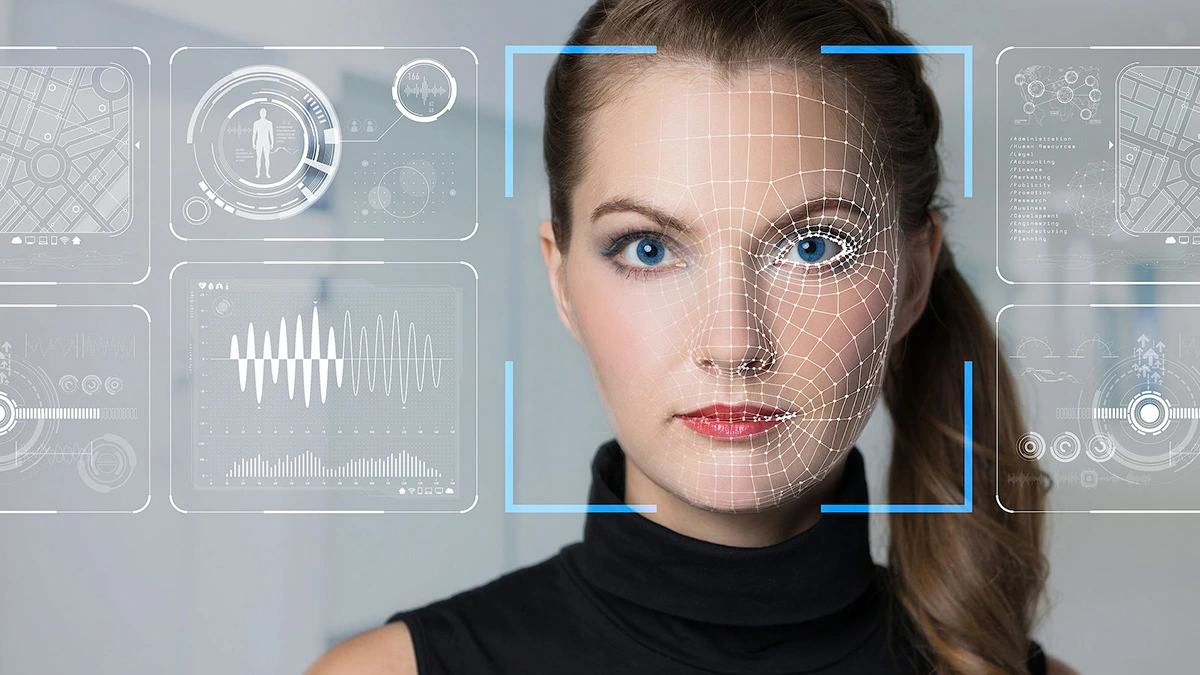Facial recognition technology sounds futuristic, but it’s already a big part of our lives—unlocking phones, tagging friends on social media, verifying identities at airports, and more. But how does this smart technology actually work?
In this blog post, we’ll break it all down:
- What is facial recognition technology?
- How it works – step-by-step
- Core technologies behind it
- Where it’s used in real life
- Pros and cons of facial recognition
- Privacy, accuracy & ethical issues
- The future of facial recognition
What Is Facial Recognition Technology?
Facial recognition technology (FRT) is a type of biometric system that identifies or verifies a person by analyzing their facial features from an image or video.

Just like your fingerprints are unique, your face has unique patterns—distance between eyes, jawline shape, nose size, etc.—and facial recognition uses this data to identify you.
How Facial Recognition Works (Step-by-Step)?
Here’s a simple breakdown of how the process works:
1. Face Detection.
The system detects a human face from an image or video using AI. It locates the face in the frame, similar to how your phone camera focuses on faces.
2. Face Analysis.
The system maps your face using key data points:
- Distance between eyes
- Nose position
- Cheekbone shape
- Jawline length
- Eye depth and spacing
This step converts your face into a “faceprint” – a mathematical code.
3. Image to Data Conversion.
The image is then converted into a set of numerical values, usually in the form of a vector (i.e., a list of numbers that represent your facial features).
4. Matching with Database.
The system compares your faceprint with a stored database of known faces to:
- Identify who you are (e.g., police searching for a suspect)
- Verify your identity (e.g., unlocking your phone)
5. Decision & Result.
If there’s a match above a certain threshold, the system gives a positive match. If not, access is denied or the system flags it as “unknown.”
Technologies Behind Facial Recognition.
Facial recognition combines multiple technologies, including:
| Technology | Role in Facial Recognition |
|---|---|
| Artificial Intelligence (AI) | Learns facial patterns & improves over time |
| Computer Vision | Helps the system “see” and detect facial structures |
| Machine Learning | Trains models to recognize faces in different conditions |
| Neural Networks | Mimics the brain for better pattern recognition |
| 3D Mapping | Captures depth and curves of face (used in iPhones) |
| Infrared Sensors | Detect faces even in low light (used in advanced systems) |
Where Is Facial Recognition Used?
Facial recognition is already part of many industries and daily tasks:
| Use Case | Examples |
|---|---|
| Smartphones | Face unlock (iPhone Face ID, Android Face Unlock) |
| Security & Law Enforcement | Airports, surveillance cameras, border checks |
| Social Media | Facebook photo tagging, Snapchat filters |
| Banking & Payments | Face-based login, payment authentication |
| Attendance Systems | Schools, offices, exam centers |
| Retail & Marketing | Customer behavior tracking, personalized ads |
Benefits of Facial Recognition.
1. Convenience.
No need to remember passwords or carry ID—just show your face.
2. Security.
Harder to spoof than passwords or PINs (though not perfect).
3. Speed.
Unlocks devices or verifies identities in a fraction of a second.
4. Contactless.
Ideal for post-COVID safety—no need to touch anything.
Challenges & Limitations.
1. Accuracy Issues.
- May not work well in poor lighting
- Struggles with changes in facial hair, makeup, aging
- Lower accuracy for darker skin tones (bias issue)
2. Privacy Concerns.
- Data misuse or surveillance fears
- Unauthorized face scanning without consent
3. Vulnerability to Spoofing.
Basic systems can be fooled by photos, videos, or 3D masks (though modern systems use anti-spoofing tech).
Legal & Ethical Questions.
With power comes responsibility—and facial recognition raises serious ethical questions:
- Should governments use it to monitor citizens?
- What if companies collect face data without asking?
- Who controls your biometric data?
Many countries are still creating regulations and laws to handle these concerns.
The Future of Facial Recognition.
Facial recognition is evolving rapidly. Here’s what we can expect:
| Trend | What It Means |
|---|---|
| Emotion recognition | Systems that detect mood or stress levels |
| Integration with AR/VR | Personalized experiences in metaverse or games |
| Smarter anti-spoofing | Stronger protection against fraud |
| Global regulations | More countries drafting face-data laws |
| Touchless everything | Travel, banking, and shopping with just your face |
Summary Table.
| Feature | Explanation |
|---|---|
| What It Is | Biometric tech that identifies faces |
| Used In | Phones, airports, law enforcement, banks |
| Key Steps | Detect → Map → Match → Verify |
| Pros | Fast, secure, contactless |
| Cons | Privacy issues, not 100% accurate |
| Future Scope | Emotion reading, smart cities, ethical laws |
Final Thoughts.
Facial recognition is no longer science fiction—it’s part of our reality. While it makes life more convenient and secure, it also brings challenges like privacy concerns, data security, and ethics.
As users, students, and future professionals, it’s important to:
- Understand how it works!
- Know where and why it’s used!
- Be aware of your rights regarding biometric data!
What are your thoughts on facial recognition technology? Would you trust it in your daily life or prefer more control? Let’s discuss in the comments!
Leave a Reply